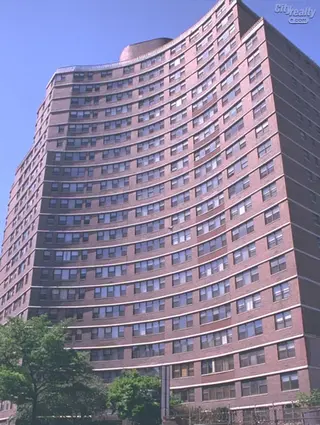 Carter Horsley
Carter HorsleyDec 23, 2011
Carter's Review
The rectilinear grid of midtown Manhattan has resulted in few non-rectilinear buildings and even fewer with major curves.
For many years, this was the midtown's major building with a big curve and still is one of a rare and pretty select bunch. (The others are 200 Central Park South, 9 West 57th Street and 1114 Avenue of the Americas, and 245 East 66th Street.)
The east façade of this 15-story, red-brick apartment house is concave while the rest of the façades are "normal."
The large arc of the concave on this through-block building runs closer to Third Avenue on 36th Street than on 37th Street.
The curve is quite graceful as it is very broad and open, imparting a sense of envelopment, grandeur and welcome. The horizontal emphasis of the façade accentuates the impact of the curve.
Curved buildings are more expensive to build, at least in New York, because they are not as simple as rectilinear, off-the-shelf buildings.
Normal, or rather more common, curved buildings, such as cylinders, are often rather disappointing visually, possibly because they seem to be receding at their sides and their bulk is harder to visualize.
This large building, which has 285 apartments, has its curved façade facing an exit from the Queens-Midtown Tunnel that funnels traffic to 37th Street where it can turn north on Third Avenue. The other façades open onto the Murray Hill neighborhood.
Since this building was erected in 1960, the area to the north and east has been largely rebuilt with many major new luxury high-rise towers that have significantly changed the area for the better in terms of neighborhood amenities and ambiance.
The building, which is also known as the Murray Hill Crescent, was converted to a cooperative in 1982.
It was designed by Hyman Isaac Feldman.

- Co-op built in 1963
- 6 apartments currently for sale ($335K to $625K)
- 1 apartment currently for rent ($3.2K)
- Located in Murray Hill
- 286 total apartments 286 total apartments
- 10 recent sales ($320K to $1.1M)
- Doorman
- Pets Allowed
 6sqft delivers the latest on real estate, architecture, and design, straight from New York City.
6sqft delivers the latest on real estate, architecture, and design, straight from New York City.
